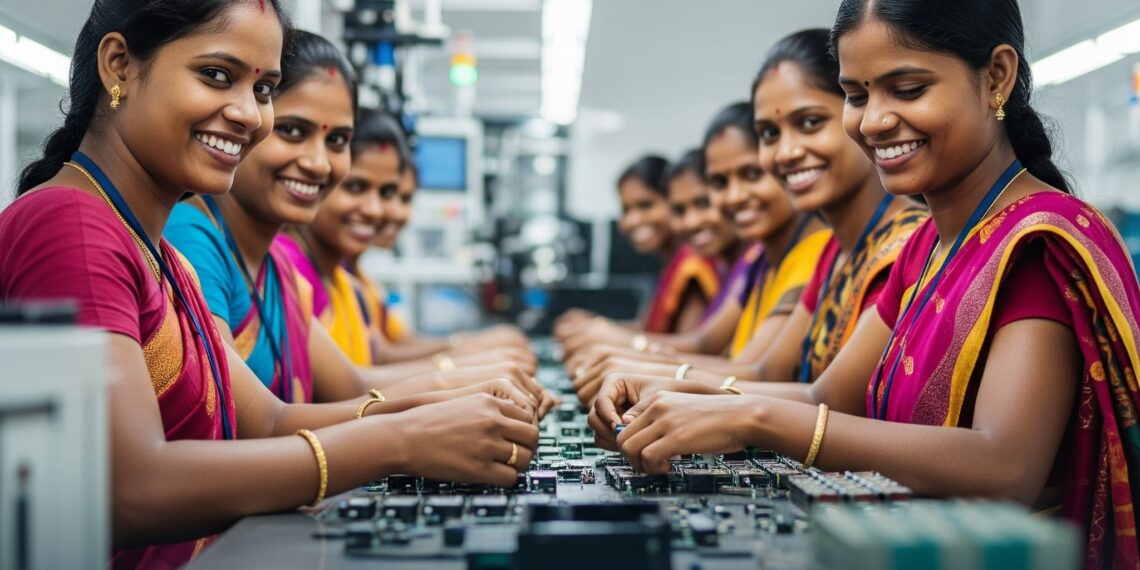Tamil Nadu dominates India’s women factory employment landscape with 655,020 women directly employed in manufacturing, according to the Annual Survey of Industries 2022-23. This represents nearly 45% of the top five states’ combined women factory workforce, highlighting the state’s textile and manufacturing prowess.
Table of Contents
Regional Leaders: South India’s Manufacturing Advantage
The data reveals distinct regional patterns in women’s industrial employment across India:
| State | Women Employed | Key Industries | Regional Share |
|---|---|---|---|
| Tamil Nadu | 655,020 | Textiles, Automotive, Electronics | 45.2% (Top 5) |
| Karnataka | 247,719 | IT Hardware, Textiles, Garments | 17.1% (Top 5) |
| Andhra Pradesh | 104,091 | Pharmaceuticals, Textiles, Food Processing | 7.2% (Top 5) |
| Maharashtra | 88,985 | Automotive, Chemicals, Textiles | 6.1% (Top 5) |
| Gujarat | 84,266 | Chemicals, Textiles, Engineering | 5.8% (Top 5) |
Tamil Nadu’s Textile Triangle Success
Tamil Nadu’s leadership stems from its robust textile and garment manufacturing ecosystem, particularly in districts like Tirupur, Coimbatore, and Chennai. The state’s women-friendly policies, established supply chains, and skilled workforce have created a sustainable employment model.
Manufacturing Diversity: Beyond textiles, Tamil Nadu’s automotive sector (Chennai automotive hub) and electronics manufacturing contribute significantly to women’s employment, offering diverse career opportunities across skill levels.
The North-South Employment Divide
The data reveals striking regional disparities, with southern states dominating women’s factory employment while traditionally industrial northern states lag significantly:
Northern States Performance: Uttar Pradesh (53,041), Punjab (47,035), and Haryana (24,467) show considerably lower numbers despite their industrial presence, indicating potential for targeted women’s employment initiatives.
Policy Implications: States like Bihar (1,558) and Chhattisgarh (4,810) present opportunities for women’s economic empowerment through strategic manufacturing investments and skill development programs.
Economic Impact & Future Outlook
This employment pattern aligns with India’s goal of becoming a global manufacturing hub under Make in India. Women’s factory employment not only drives economic growth but also promotes financial independence and social empowerment in rural and semi-urban areas.
The concentration in textile-heavy states suggests opportunities for other regions to develop women-centric manufacturing policies, potentially doubling India’s women factory workforce through strategic industrial development.
Discover more insights about India’s manufacturing sector and women’s workforce participation in our manufacturing industry analysis and women in workforce coverage at TechnoSports.








